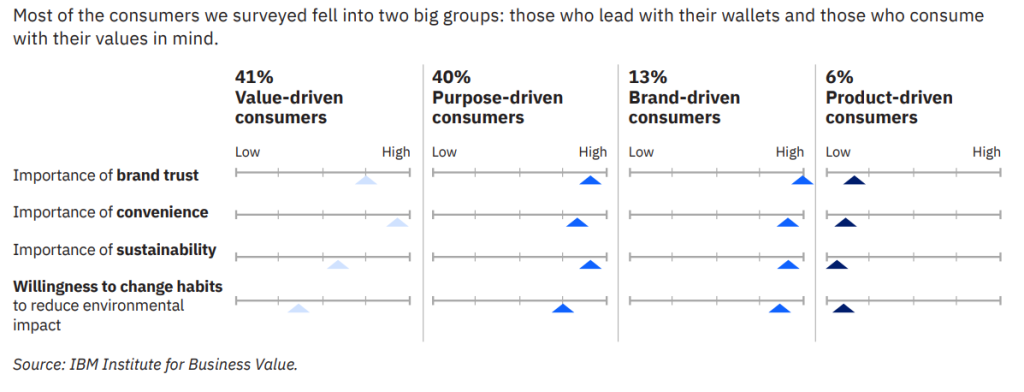With technology radically shaping the way we live, consumer shopping behaviour is one thing which fundamentally changed. Consequently, the way brands handle marketing should also change.
In IBM’s research, Meet the 2020 consumers driving change, IBM introduced the shifts in consumer behaviour along with the corresponding shift in action they demand from companies. Let’s dive down.
Who are the 2020 consumers?
From the analysis of the IBM survey results, four clusters of consumers with distinct shopping behaviour emerged.
01. Value-driven consumers (41% of the respondents)
Value-driven consumers make up the majority of the survey respondents. They are looking for convenience and good value when it comes to the products and services that they want to avail.
02. Purpose-driven consumers (40% of the respondents)
The purpose-driven consumers are nearly tied in terms of size with the value-driven consumers at 40%. These kinds of consumers select products and brands that align with their own values and lifestyle.
03. Brand driven-consumers (13% of the respondents)
Brand-driven consumers are not as big as the other two segments, but they still have a substantial proportion at 13%. The purchasing decisions of these kinds of consumers heavily depend on brand reputation.
04. Product-driven consumers (6% of the respondents)
The minority of respondents are classified as product-driven. This kind of consumers heavily relies on research for their purchases and puts a premium on authenticity as well as functionality.
With this, we can see that a huge chunk (81%) of consumers in 2020 are either product- or value-driven. Given this, we expect that brands will be aligning their strategies with biases leaning towards these segments.
Overall consumer behaviour
While there are things that are particularly distinct among the 2020 shoppers, they also have a lot of commonalities. Let’s see what other insights can we get from IBM’s survey results.
Sustainability hits tipping point
About8 in 10 consumers on the whole places value of sustainability in the products and services that they avail.
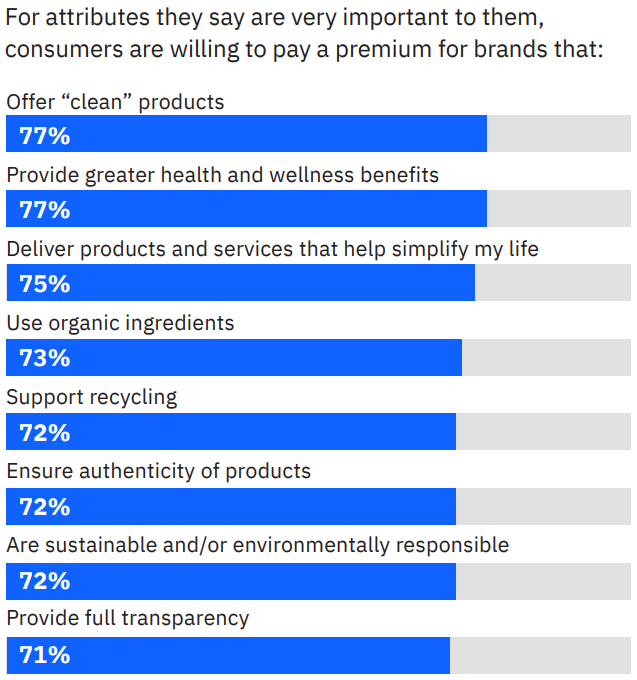
As shown above, around 77% of the respondents are willing to pay a premium for “clean products”. Similarly, not less that 70% of consumers will pay a premium for products that offer sustainability-related benefits.
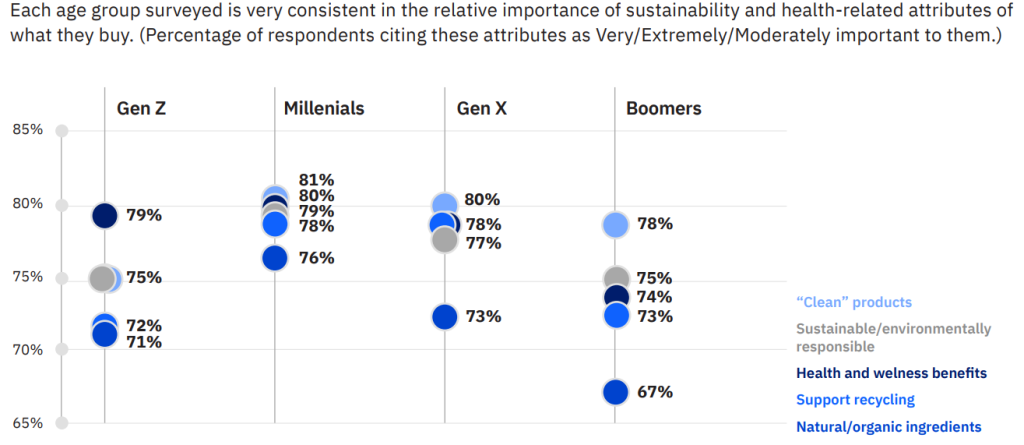
Looking at the consumers per generation as shown in the figure above, and we can see that this premium placed on sustainability is consistent across all generations.
Among the four generations considered, the millennial respondents have the tendency to prefer sustainability in all the domains considered in the study.
Trust but verify
Across all age groups, there is a growing preference to research extensively on a product first before actually making a purchase, regardless of brand trust.
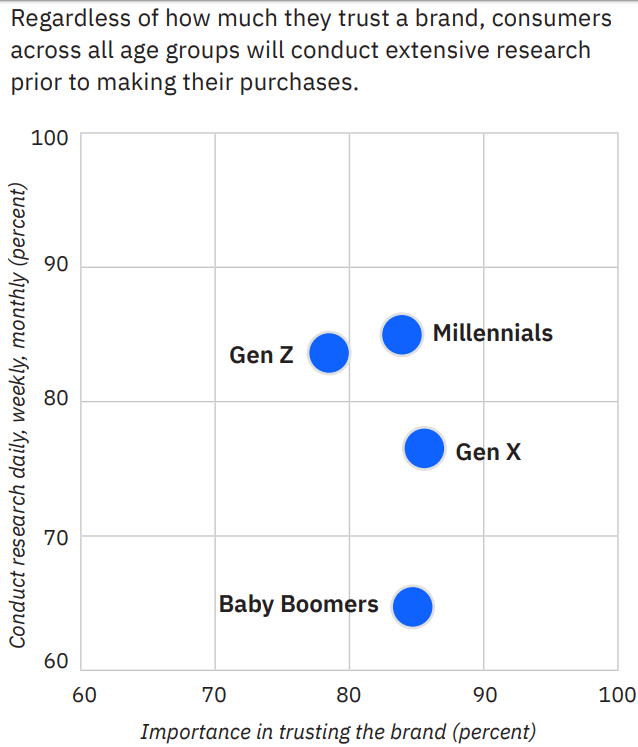
Some things that consumers want from brands and services include:
- Traceability of sourcing, processing, and delivery
- Assurance of social responsibility (e.g., recycling, funding charitable causes)
- Access to information on sustainability policies
Shopping has changed, but fundamentals still matter
While the things that the consumers value in 2020 may be different, brands and retailer should continue enforcing the fundamentals, making sure that they deliver to the consumers better than any other competitor.
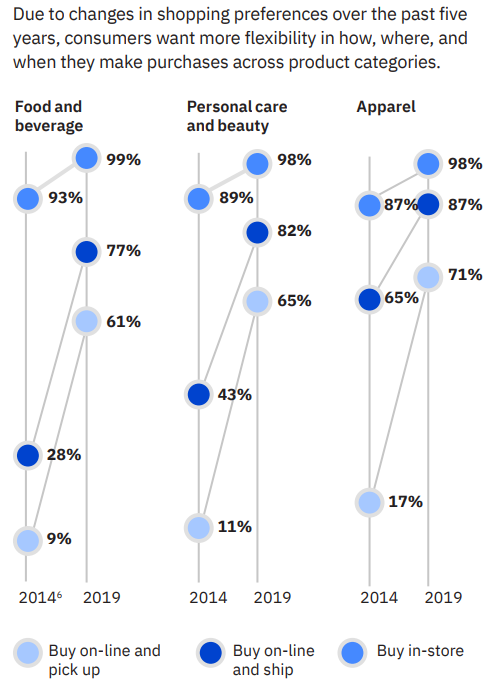
In order to make this happen, there is a need for companies to know which are the current critical needs of the shoppers and in response how the can get better in accommodating these.
With the 2020 shoppers being pretty much always-on with all the existing technological capabilities, doing this has attained a new level of difficulty.
In line with this, some of the actions IBM suggested include:
- Leveraging data and technology in order to deliver the right product and services exactly when and where the consumers need them.
- Companies must integrate their various channels, eliminating siloes. This way, the shopping experience will be seamless.
- Expand the role of the store to reach its full potential, now that consumers also desire a communal or experiential shopping experience. That is, they want to be capable of interacting with the brands they support.
Yes, the fundamentals remain the same but the brand landscape has definitely changed, something which we expect continually happen over time. Brands, now more than ever, need to know their consumers and what they want if they do not want to be put aside in this ever-changing market.

